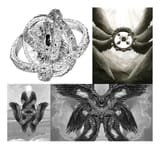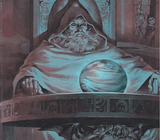>>24479178 (OP)The seraphim, cherubim, and ophanim (wheels) are Biblically accurate celestial creatures or entities. But actually, they are not angels. Nevermind the fact Christians and Jews came to call them "angels." The Biblical word for angels (malakhim) is never ever used to refer to a seraph or cherub or ophan. The times it does get used, the malakhim are entirely-humanlike celestial agents. The Greek word angelos is used to translate malakh (and sometimes to translate the word "gods," or elohim, in certain cases). The Hebrew Old Testament is comfortable using "gods" (elohim) both for children of the Most High God (so, "angels") and even dead figures now residing in Sheol, as well as using it to refer specifically to God. The more accurate way to think of the celestial hierarchy (contrary to modern Jewish and Christian angel systems) is that there is God Most High, his "children" who are bene elohim and also elohim, and seem to include the malakhim (or maybe they are one and the same), and both God and the malakhim are entirely humanlike in appearance whenever they appear to men; plus, at least some elohim are capable of dying (cf. Psalm 82) and their spirits can go to Sheol. Abraham even ate with some of these angels. On the other hand, the seraphim are six-winged serpents always covering their faces, the cherubim are four-headed four-winged tetramorphs with the heads of a man, ox, bull, and eagle, and the ophanim are wheels within wheels, funky gyroscopes. And they're full of eyes. So are the cherubim. Presumably, so are the seraphim.


